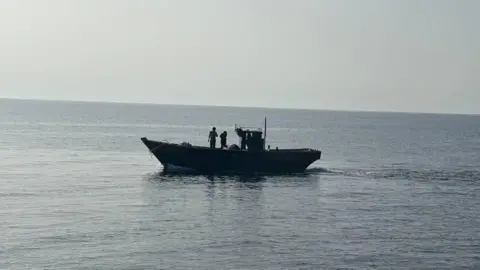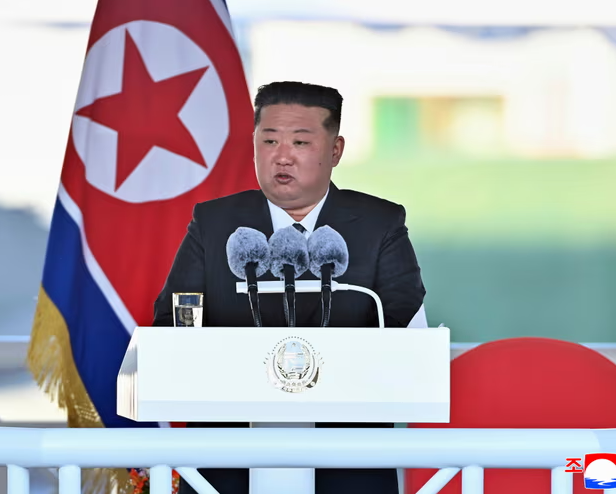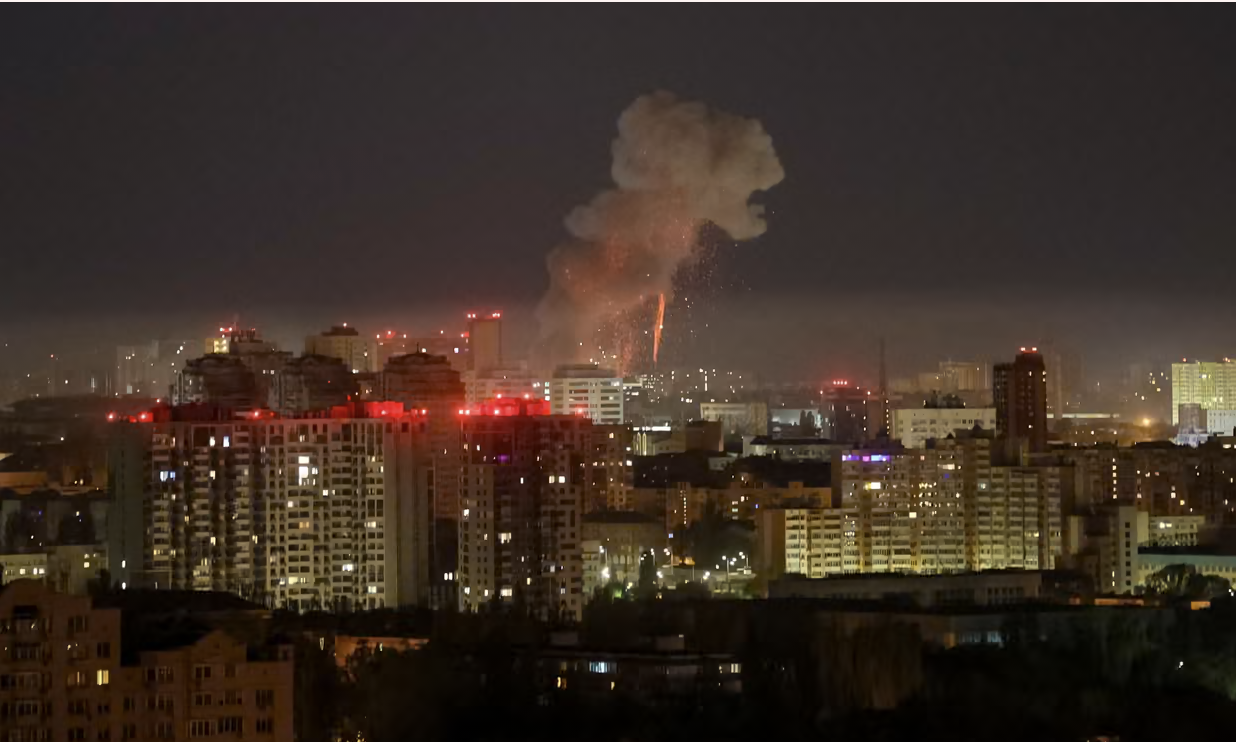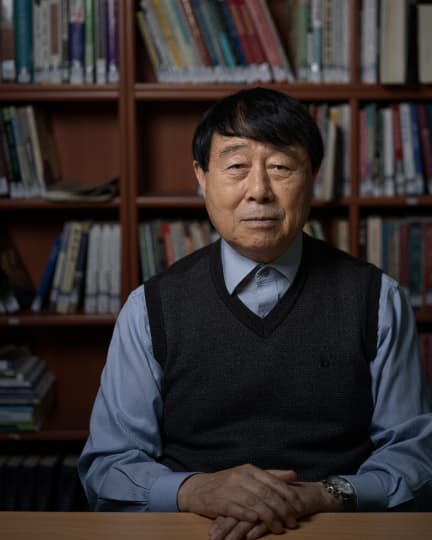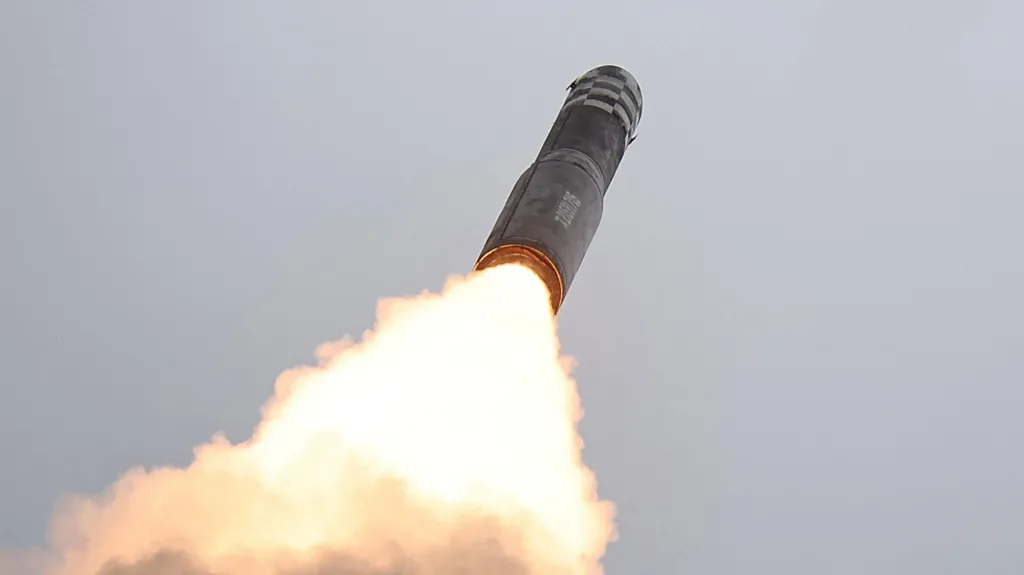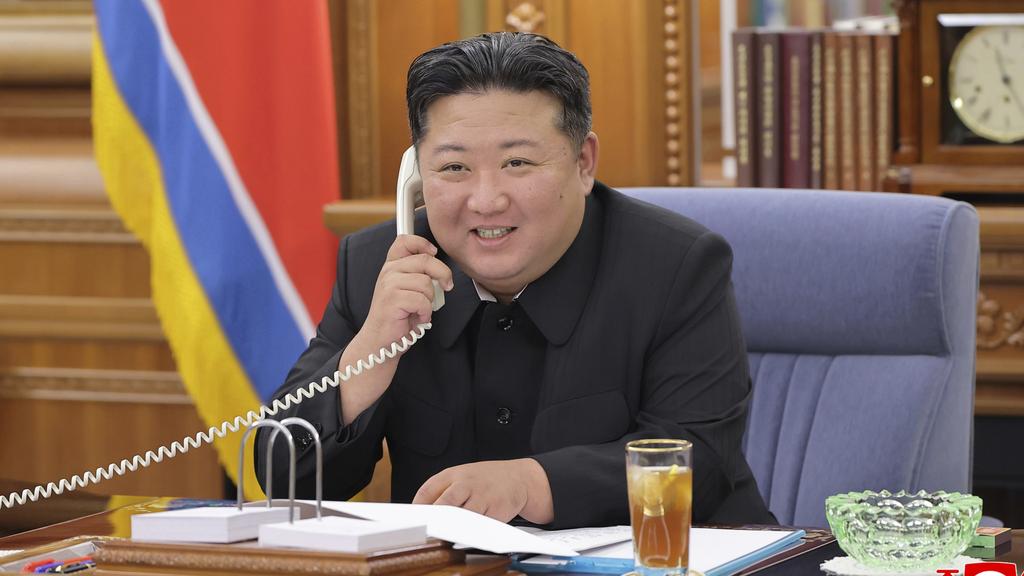
This article is more than
9 year oldKim says North Korean missiles can reach US in Pacific
Mr Kim was speaking after twin tests on Wednesday of the Hwasong-10 missile, known internationally as the Musudan.
The US and South Korea say the first test failed, but the second travelled about 400km (250 miles) and reached an altitude of 1,000km.
The UN Security Council expressed its opposition after an emergency meeting.
Alexis Lamek, France's deputy UN ambassador, said all 15 members had "expressed a strong concern as well as their opposition to these launches," Reuters reports.
A spokesman for Secretary General Ban Ki-moon said the tests were "a deliberate and very grave violation" of North Korea's international obligations.
Existing UN resolutions, brought in because of its continuing nuclear and conventional weapons programme, ban North Korea from using ballistic missile technology.
'A great event'
The Musudan, named by outsiders after a North Korean village, is believed by outside observers to have range of up to 4,000km (2,500 miles).
That is far enough to reach the US territory and military bases in Guam, though it has never been fully flight tested.
Four tests in recent months have ended in failure.
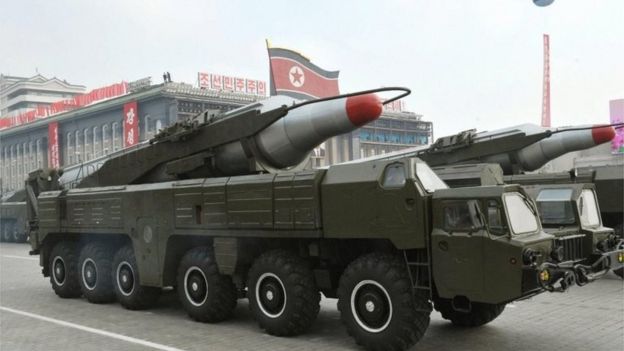
The first missile launched from the North's eastern coast on Wednesday is believed to have flown about 150km before landing in the sea.
But a second one launched hours later travelled at least 400km and reached a height of 1,000km.
North Korea's KCNA state news agency said it had been successfully conducted, without endangering surrounding countries.
Mr Kim, who as always was said to have supervised the test, said it had been "a great event".
"We have the sure capability to attack in an overall and practical way the Americans in the Pacific operation theatre," he said.
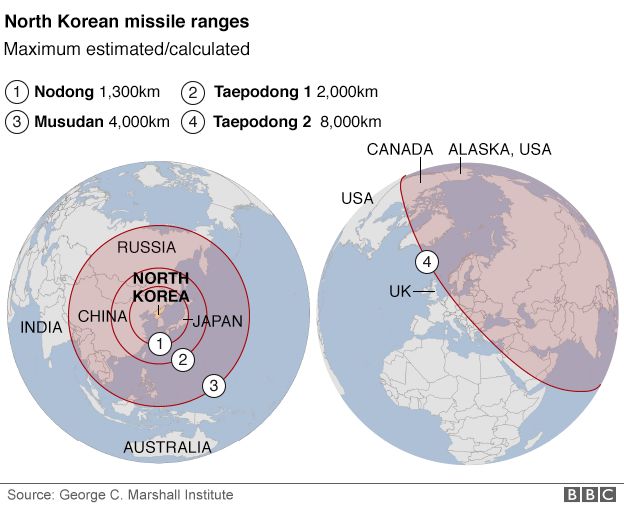
South Korea has not officially said whether it is considering it a successful launch.
But an analyst at the state-funded Science and Technology Policy Institute said it had to be seen as such.
"No other missiles fired by North Korea have ever flown that high," Lee Choon-geun was quoted as saying by the Associated Press.
Japan said the launch showed "a certain level of capability" and could lead to a further strengthening of North Korea's ballistic missile capabilities that could cover Japanese territory.
US Defense Secretary Ash Carter acknowledged that one of the missiles "flew for a long time".
In addition to a flurry of missile tests, North Korea conducted its fourth test of a nuclear weapon in January.
But despite its claims, it remains unclear whether it has the ability to make a nuclear device small enough to mount onto a warhead.
